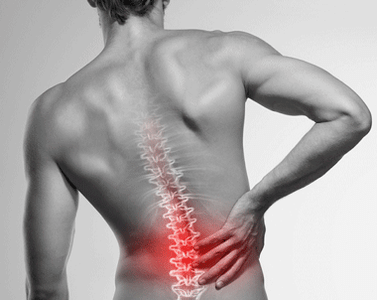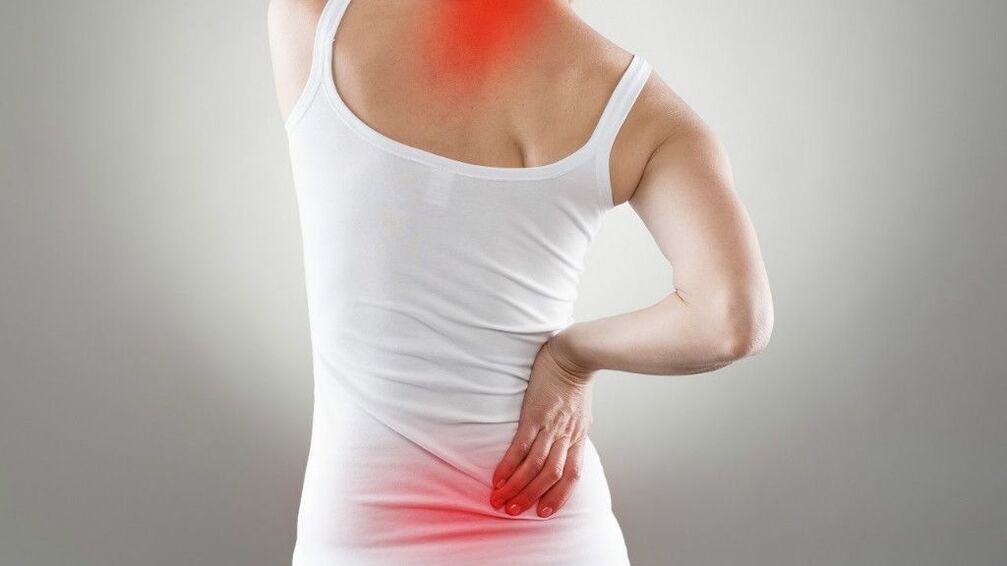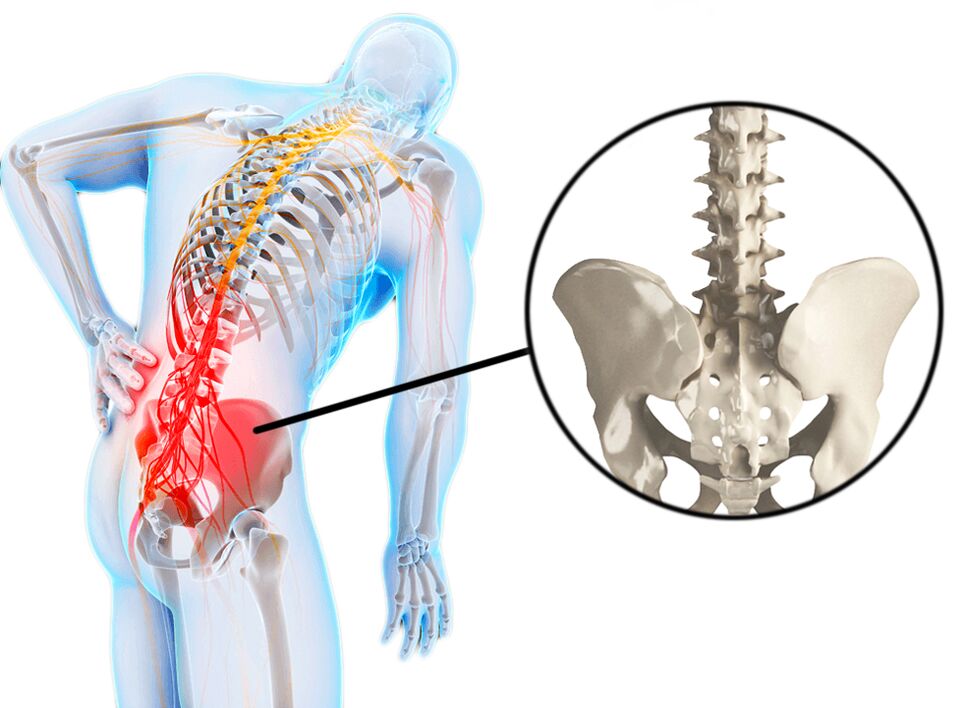
Back pain is one of the most common types of pain, and that's why many people simply ignore it. However, pain in the lower back can not only limit a person's mobility, but can also signal diseases of the internal organs of the abdominal cavity. Therefore, if you feel the slightest discomfort in your back, it is important to seek help from a doctor who will conduct an examination and prescribe an effective treatment.
Types of pain
When examining a patient, the first thing the doctor is interested in is the intensity and frequency of pain. Depending on the cause, pain in the lower back can be of the following nature:
subacute - begins suddenly and can last from 6 to 12 weeks;
acute - occurs suddenly, is characterized by high intensity, can last about 1. 5 months;
variable (transient) – occurs from time to time;
chronic - may have weak or strong intensity, lasts 12 weeks or more;
boring;
painful;
weak, medium intensity, strong.
Pain can vary by cause. In this case, the duration and intensity of the feelings may be different. Therefore, it is important to describe your feelings as accurately as possible when contacting the doctor.
Common causes of back pain
There are the following systems that can cause pain in the lumbar region:
Musculoskeletal system– pain usually occurs as a result of damage to the spine, as well as damage or strain to the back muscles.
Digestion- pain in the lower back is usually "shoots" caused by disturbances in the work of the gallbladder, pancreas, intestines, liver and stomach. This is observed with gastritis, the presence of stones in the bile ducts, intoxication, pancreatitis, poisoning, stomach ulcers and various forms of obstruction.
Nervous- pain is caused by the formation of a hernia, neuropathy, nerve compression, curvature of the spine, protrusion and inflammatory processes occurring in the vertebrae.
Sex and urine- pain syndrome develops in a person with urolithiasis, problems with the bladder and kidneys, various types of damage to the ovaries and uterus.
The most common diseases that cause back pain
Spinal curvatures (scoliosis, kyphosis)
In this case, when the disease occurs in the middle and late stages, a person experiences pain. As a rule, the pain syndrome manifests itself at the end of the working day and may be accompanied by fatigue of the back muscles. The pain syndrome manifests itself in the form of spasms of the periarticular muscles of the lower and upper limbs, as well as the muscles of the spine and gluteal muscles.
Ankylosing spondylitis

This is an inflammatory system disease characterized by the fusion of individual vertebrae into a whole. In parallel, there is an accumulation of calcium in the ligaments that stabilize the spine. This can lead to a complete loss of mobility.
Ankylosing spondylitis is accompanied by the following back pain:
stiffness of movements in the lumbar region;
a strong increase in intensity when a person is at rest for a long time.
Urolithiasis disease
Attacks manifest as severe pain in the lower back, originating from the affected kidney. Even if a person changes his body position, the pain does not go away and does not decrease. Typically, attacks are accompanied by a change in the color of urine (it becomes red) and a decrease in its amount.
Pain syndrome can be caused by:
inflammatory process in the pancreas;
intestinal obstruction;
painful menstruation (algomenorrhea);
osteomyelitis;
pregnancy;
appendicitis.
Osteochondrosis of the lumbar region
It is one of the most common diseases characterized by thinning of the intervertebral discs, which act as shock absorbers. This causes irritation of the nerve roots, which causes spasms of the surrounding muscles and severe pain. If the disease is diagnosed at an advanced stage, it is most likely accompanied by a herniated disc that puts pressure on the spinal cord, which causes increased back pain.
The pain syndrome intensifies in a person:
rises from a lying or sitting position;
bends to the sides;
he tries to lie on his stomach.
As a result of the development of the disease, if a massive hernia has formed in the spine, the pain in the lower back will only intensify. Moreover, the pain syndrome may be accompanied by weakness or numbness in one or both legs.
Spondyloarthrosis
This is a degenerative-dystrophic disease of the cartilage tissue surrounding the intervertebral discs. The tissue thins over time, which leads to its destruction, osteophytes (specific bone growths) are formed around the lesion. This leads to a decrease in the distance between the vertebrae, a narrowing of the spinal canal, which causes irritation of the nerve roots and the spinal cord itself.
Pain with spondyloarthrosis has the following characteristics:
in the initial stage it appears only in the morning, later it becomes permanent;
increases after physical activity (walking, standing) and decreases after rest;
may be accompanied by pain in the hip joint and thigh.
The pain syndrome with spondyloarthrosis is intensified as a result of muscle spasms that are constantly under tension. In this case, it is very difficult to eliminate back pain.
Which specialist should you consult when your back hurts?
Since the organs in the abdominal cavity are located quite close to each other, the symptoms of the disease can be confused. Moreover, long-lasting aching pain can be girdle in nature. Therefore, it is important to undergo diagnostics before treatment, one of the specialists can send you for examination:
Neurologist– when the patient feels sharp pain with "shooting" in the spine, accompanied by partial loss of sensitivity and mobility. When the pain intensifies after changing body position or resting for a long time.
Surgeon or traumatologist– as a result of a fall, injury or strenuous exercise.
Nephrologist or urologist– with frequent or difficult urination accompanied by aching pain in the lower back, as well as sharp pain on one side of the lower back.
Gastroenterologist- when the pain syndrome is accompanied by an increase in body temperature, weakness, disorders of the digestive system. If the pain is only on one side and is pulling.
Gynecologist– if the pain is felt on one or both sides, it may be accompanied by general weakness and intensify during physical activity. When pain is felt during menstruation or during pregnancy.
If a person knows the cause of back pain, then there is no need to contact a specialist (heavy physical activity - the pain usually disappears within a day or two). In other cases, you should pay attention to such symptoms and visit a specialist doctor.

How to determine back pain - diagnostic methods:
Ultrasound- in case of suspicion of pelvic or abdominal diseases. It can even be prescribed to children, but this does not always allow us to see the real cause of back pain.
x-ray- if the patient has tears, injuries, scoliosis. But this method allows you to see only the bone tissue.
CT– if there are hernias, neuropathies, protrusions, neoplasms or spinal cord injuries. Computed tomography is ideal for patients with contraindications for magnetic resonance imaging.
MRI– indications are similar to CT. The method is highly accurate and allows you to study the necessary organs in as much detail as possible.
Colonoscopy and gastroscopy- if the patient is diagnosed with diseases of the digestive system. These examinations allow a good look at the abdominal organs and, if necessary, take tissue samples for analysis.
Methods of treatment of back pain
Treatment methods for back pain are determined by the cause of its occurrence. When musculoskeletal disorders are present, non-pharmacological, drug or surgical treatment may be required.
Non-drug treatment methods:
physiotherapy - the course of treatment is selected individually based on existing diseases. To achieve the desired effect, it is important to regularly perform a series of exercises;
physiotherapy - includes laser treatment of injury, magnetic therapy, electrophoresis and other procedures;
acupuncture;
therapeutic and restorative massage - can be used only if the patient does not have an exacerbation of the disease;
manual therapy and work with an osteopath.
Non-drug treatment is usually supplemented with drugs.
Drug treatment
NSAIDs (non-steroidal anti-inflammatory drugs) are used as the main therapy. Medicines are prescribed in the form of intramuscular and intravenous injections, tablets, ointments and creams, as well as locally applied rectal suppositories and patches.
The dose and duration of treatment is determined by the doctor. Uncontrolled use of drugs can cause side effects.
If taking NSAIDs does not give the desired effect, the doctor prescribes corticosteroids (hormonal drugs). Their reception allows to stop the inflammatory process and relieve pain.
If a patient has muscle spasms in the lumbar region, he is prescribed antispasmodics. Such drugs can relieve muscle spasms in the lower back and improve general well-being.
Medicines such as:
B vitamins that help improve nerve conduction;
decongestants that relieve the swelling of the compressed root;
sedative drugs.
Surgical treatment methods
If the doctor identifies a patient with indications for surgery, the patient undergoes surgery. However, if the patient has a herniated disc, surgery is not prescribed, as this is not an indication for surgery, regardless of its size. If the patient has indications for the removal of a hernia, a tumor, or if there is a need to remove compression of the spinal cord root, surgical intervention is performed. The decision on the need to perform any operation is made by the doctor individually, depending on the patient's indicators and condition.
Prevention of lower back pain
Moderate physical activity and a healthy lifestyle are key to a healthy back. It is important to organize a comfortable place to sleep and constantly monitor your posture. If you spend a lot of time in a sitting position, you should stand up from time to time and do a little warm-up. If you do not like to exercise, then it is advisable to walk as much as possible.
Giving up bad habits and maintaining proper nutrition will help prevent the development of diseases of internal organs. This is especially important for people who have already been diagnosed with diseases of the pancreas, stomach, kidneys and liver. In addition, you should try to keep your back warm at all times. The fact is that cold weather can cause the development of diseases of internal organs and cause inflammation of the nerves.
If there is a need to lift any heavy object, it should be done using the legs and the back should be straight. This will transfer the load from the lower back muscles. And finally, do not ignore lower back pain, even if it does not cause severe discomfort. It is better to be examined in time and start treatment than to fight with serious consequences.


















